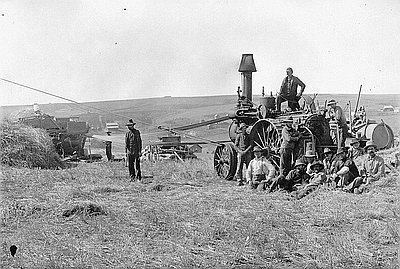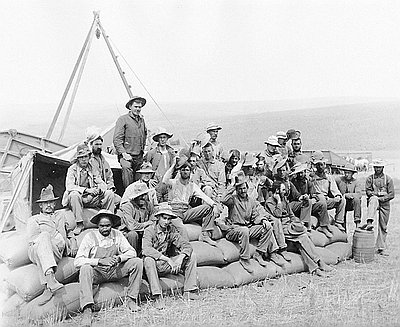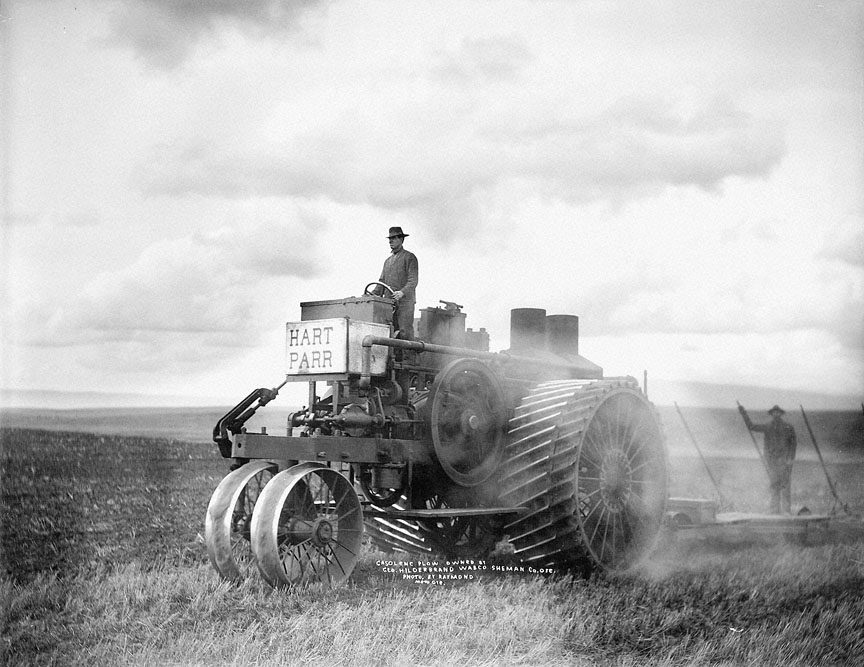- Catalog No. —
- OrHi 7658
- Date —
- c. 1910
- Era —
- 1881-1920 (Industrialization and Progressive Reform)
- Themes —
- Agriculture and Ranching, Environment and Natural Resources, Science, Medicine, and Technology, Trade, Business, Industry, and the Economy
- Credits —
- Oregon Historical Society
- Regions —
- Central Columbia River
- Author —
- William Raymond
Gasoline Plow Owned by George Hilderbrand
This ca. 1910 photograph shows George Hilderbrand operating a Hart Parr tractor and plow at his wheat farm near Wasco, in Sherman County. Hilderbrand, who moved to Sherman County in 1887, owned at least a thousand acres of farmland and also worked as a clerk for the local school district. He may have owned one of the first gasoline-powered tractors in the county. The image was taken by William Raymond, a Moro-based photographer who worked between 1899 and 1935.
While the first steam tractors were built in the late 19th century, it wasn’t until 1902 that the Hart Parr Gasoline Engine Company in Iowa produced the first commercially successful gasoline tractor. While competition soon followed, the Hart Parr’s tractors were the most popular in the nation in the early 20th century. However, many farmers continued to prefer horse-drawn plows over the early tractors because of their large size, heaviness (up to 20,000 pounds), and expense.
By the late 1920s, tractors had become more affordable and versatile, and as a result, more people bought them. Farmers were optimistic about technological developments and eager to modernize. While tractors and other farm mechanization increased farm efficiency, the higher expense of the machines led to more farmer debt. In addition, because machines replaced animal and human labor, they contributed to a national demographic shift from farms to cities.
Written by Kathy Tucker, © Oregon Historical Society, 2002.
Related Historical Records
-
Wheat Harvesting, Sherman County
This photograph shows workers gathered around a steam engine during the wheat harvest in Sherman County. The photographer is unknown, as is the date of the photo, though …

-
Harvest Hands Rest on Sacks of Grain, Moro
This photograph shows harvest hands seated on sacks of grain near the northeastern Oregon town of Moro. It was taken by Moro photographer Will Raymond probably some time …

